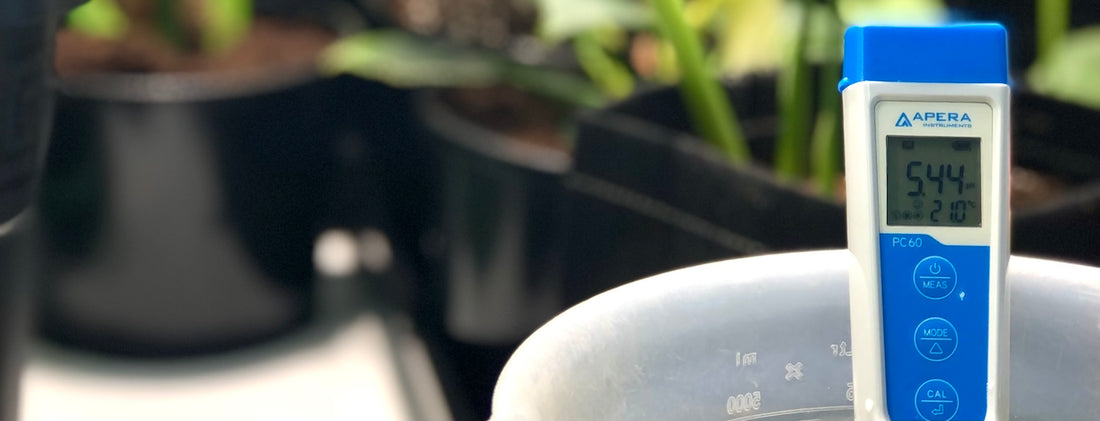Maintenance of reservoirs is relatively easy, by working smarter from the start you will find you have more time for the plants, and less time spent cleaning and fixing problems.
Follow these steps on a daily or weekly basis:
- Check the pH using either test strips or an electronic meter.
- Adjust the pH up or down as required.
-To check the concentration of food we use an EC meter, in the past manual EC observations have been termed “Green Thumb” so if you don’t have one, get yourself an EC meter.
-Nutrient levels should also be checked daily, visually monitoring the leaf colour generally indicates interaction is required.
-Each week the reservoirs nutrient solution should be dumped and reset with fresh nutrients, if you do not perform this, the solutions EC will accumulate and become toxic to the plants.
When filling up a reservoir for the first time there are a few things to consider regarding the variety grown in solution.
The varieties grown in solution (unless propagated from a clone) have their own pH and EC levels, and it is up to the grower to adjust according to the plants requirements, don’t just follow a feeding chart and assume it has been designed for your variety, they generally state, intended as a guide only, so we must establish plant nutritional requirements before preparing huge volumes of solution.
Water Temperature
A very important statistic, there is a sweet spot; 18.5-22C below this and root zone activity is slowed, nutrient absorption is restricted and the roots ability to absorb oxygen is limited.
Above 22C affects the reservoir solutions stable pH & EC (water will evaporate raising the EC concentration and increasing the acidity of the solution) root zone oxygen is limited, and pathogens can now grow in solution which can cause problems like root-rot, nutrient lock out and restricted stomata operation.
Growers implement tools such as water chillers and/or heaters depending on the season/ambient conditions.
Reservoir material!
Doesn’t seem like a big deal, containers are containers right? Wrong, some containers are not suitable to store food in them because of the chemicals used in manufacture are toxic to human health.
The same thing applies to a nutrient tank, the water leaving the tank most of the time is feeding consumable crops the temperature of the water can heat up these polymers and deliver them alongside your nutrients to your plants.
The safest plastics to use for any hydroponics projects are HDPE. You’ll pay a bit more for them, but can rest assured that your herbs and veggies are safe to consume.
Light exposure
When a reservoir is not sealed from light, algae can grow in solution. Algae for the most part isn’t a big deal even though it is sucking nutrients from your tank however, there are some forms of algae that a super toxic and can harm you as well as your plants, to negate this most growers would have some type of lid/plastic mounted over the tank to prevent any light from entering the solution and then to be super sure upon cleaning the tank and refilling between weeks you could add hydrogen peroxide and fresh water to a quarter filled tank and run through the systems and lines to de-clog any built up solution, it will sterilize anything it touches, it is completely systemic in plants and will oxygenate your reservoir water after the hydrogen molecule has dissipated.
Clean tanks, fill banks.




